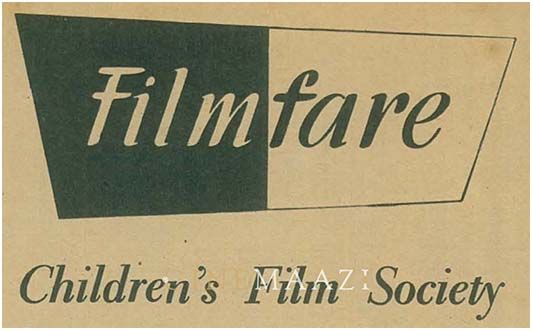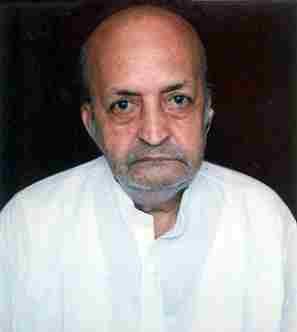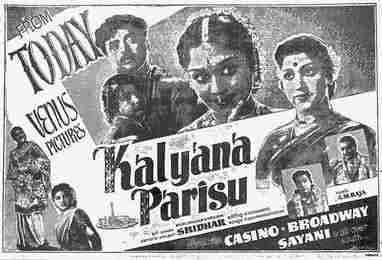Children's Film Society

Subscribe to read full article
This section is for paid subscribers only. Our subscription is only $37/- for one full year.
You get unlimited access to all paid section and features on the website with this subscription.
Not ready for a full subscription?
You can access this article for $2, and have it saved to your account for one year.
The decision of the Government of India, announced by the Minister of Information and Broadcasting at the third film festival organised by the Cultural Film Society at Delhi last December, to form a national body to sponsor the production and exhibition of films for children in this country was widely and deservedly hailed at the time as a move in the right direction. It was more than that. It was a necessary and lone overdue move in a matter of vital importance to the future of our people. Commending the Cultural Film Society at its second film festival in December 1953, Dr Radhakrishnan, Vice President of India, had remarked: ''When we talk of putting before our nation certain great ideals, those ideals do not become functioning realities simply because they are stated in our books or incorporated in our Constitution. They require to be assimilated by the people of the country. This assimilation takes place spontaneously, more or less unconsciously, by the way in which those ideals are portrayed in pictures, in literature, on the stage and the screen, in the lives of our leaders and in the example of parents and others who have the care and guidance of young people in their charge. If therefore we want our young people to acquire the proper ideals of human rights and of the need for truthfulness and integrity in private as well as public life, it is not by asking them to be truthful or to love their neighbour that we can succeed. It is by presenting to them, and keeping before their eyes and minds, concrete examples of truthfulness, integrity and of all the other virtues we wish them to acquire and to practise. One of the best and most powerfully effective means of doing so is the cinema, which enables us to show children in the films they see great examples of moral character, high courage, heroic deeds and magnanimous behaviour, from which they may absorb the examples unconsciously and practise them consciously in their own lives." There we have the aim and purpose with which the Cultural Film Society embarked three years ago upon the programme which culminated in the official registration last May of the Children's Film Society.
The immediate task before the Society is the provision of pictures suitable for showing to the children of this country. The programme which it has devised for this purpose is commendably practical and shows due regard for the problems involved. It is threefold, and comprises, firstly, the production of original films designed specially for exhibition to the children of our country; secondly, the adjustment by cutting and editing of such Indian feature films as are found suitable for showing to our children. The third part of the programme consists in the adaptation, by dubbing into Indian languages, of foreign films made specially for children-of which there is a rich and varied store-or suitable for exhibition to them, of which, too, there are quite a few such as "Bambi," "Hans Christian Andersen," "Alice in Wonderland" or ''The Living Desert." The task is not easy by any means and so far as the production of original films goes it is one of considerable difficulty. With the requisite co-operation between the industry and the Government it is certainly not insuperable.
One of the Society's primary needs is a continuous and copious supply of stories suitable for children's films. There is a vast treasury of material for these in our folklore and our history and the imaginative writer can find as much for the delight and instruction of our children in the teeming and eventful records of our own time and generation. The Society offers a payment of Rs. 2,000 for every story that is found suitable and accepted for filming. It is a somewhat modest payment, it is true, but writers should find compensation in the national service they will be discharging by thus helping the Society to build up the future citizenry of their country. The Government is doing its part to this end with commendable enterprise. One full length new feature film for children and the adaptation of two others have been sanctioned for the year 1955-56. Provision is also under consideration in the new Five Year Plan for an allotment of forty lakhs of rupees for the production of five original feature films and the adaptation of seven others a year over the period of the Plan.
While we have no hesitation in asserting that the making of films for children is a difficult undertaking and rendered doubly so by the fact that in our present paucity of cinemas it is bound to be unremunerative, there is no denying that both Government and the Society deserve the highest commendation and the public's gratitude on the beginning they have made in a field too long neglected and of the utmost consequence to the country's future which must inevitably be shaped and governed by the children of today who are the citizens of tomorrow.
This article was published in 'Filmfare' magazine’s December 9, 1955 edition.
About the Author






.jpg)




